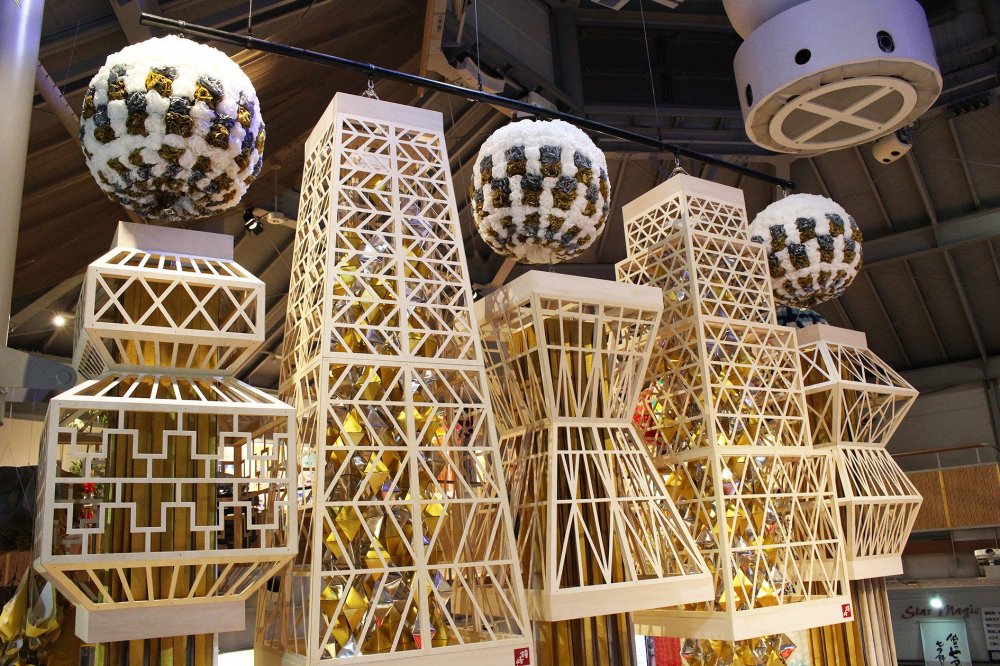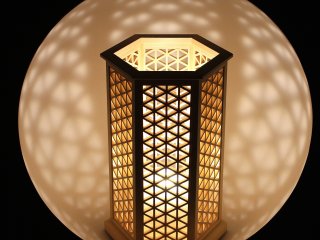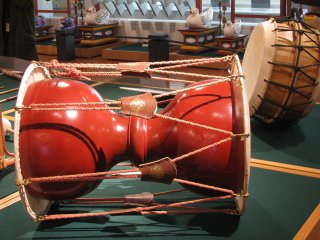Since ancient times wood in Japan has been used for the construction and manufacture of a wide variety of items from furniture and household utensils to unique works of art. Wood crafts are most developed in the wooded regions of the country like Hakone, Nikko, Kiso, and Tohoku. Here are some examples of traditional wooden crafts.
1. Kumiko, or kumiko-zaiku
Kumiko is a decorative and applied art of creating interior items from wooden slats and includes screens and partitions, furniture, decorative panels, and lamps. The kumiko technique appeared during the 7th-8th centuries and until the 19th century, items made with the method were available only to the rich and privileged.
Soft wood from coniferous trees such as pine, cedar, and cypress is used to make a base lattice. Small elements are then inserted into the gaps creating geometric patterns that represent natural motifs such as asanoha (hemp leaf), seikaiha (sea waves) and sakura (cherry blossoms). All components are fastened together without glue with everything handmade. Even small creations required many hours of painstaking work.
2. Hakone-yosegi-zaiku
The art of caskets, uchiwa (fans), frames and items decorated with mosaic geometric patterns made from different types of wood. Hakone-yosegi-zaiku originated as furniture at the beginning of the Heian period (794-1185). By the end of the Edo period, the craft had developed into the art of creating complex elegant patterns. A variety of trees grow in the Hakone mountain region, which inspired the craftsmen to create multi-colored wooden mosaics. In creating the pieces, the craftsman selects the wood, cuts out the required parts and dries them for a set time. Next, the pieces of wood are flattened to a certain thickness, superimposed onto the surface and glued.
3. Kokeshi and Sasano-bori
Wooden kokeshi dolls are very popular in the northern regions of Japan. They appeared around the mid-18th century, most likely as a toy. However, kokeshi are not play dolls but souvenirs and works of art. Although each district producing kokeshi has its own style, reflected in the proportions and style of painting, the method of making kokeshi is the same. Dolls are made with a lathe, body and head separately with parallel colored stripes then applied.
In the small town of Yonezawa, another kind of souvenir made of wood is produced – Sasano-bori. Products depicting animals - mainly birds - are cut out of wood and painted. Very finely planed layers form the tails and feathers of birds with the most popular images being falcons, roosters, owls and peacocks.
4. Traditional musical instruments
The main parts of Japanese traditional instruments are made of wood. These instruments include the shamisen lute, koto zither, biwa lute, shakuhachi flutes, and taiko drums.
5. Geta, zori, chawan and hashi
These names refer to traditional Japanese footwear with wooden soles and table items. They are manufactured in areas rich with woods, such as Nikko and Kiso. Shops located along the streets of the ancient towns of Narai, Tsugamo and Magome sell a variety of these wood products.
Geta are sandals raised on two 'heels' and worn in the matter of flip-flops. Initially from China, monks and common people wore them while aristocrats, particularly women, wore them with brocades, patterns and bells. Few people wear geta in everyday life, though they are often seen at festivals.
Zori are also sandals, differing from geta only in that their sole is flat, without supports. Zori are worn with a traditional kimono or in summer with a yukata (light kimono).
Chawan are bowls for tea or rice served with almost every dish. Hashi are chopsticks. A pair of hashi is the main item of cutlery in Japan.





















































































